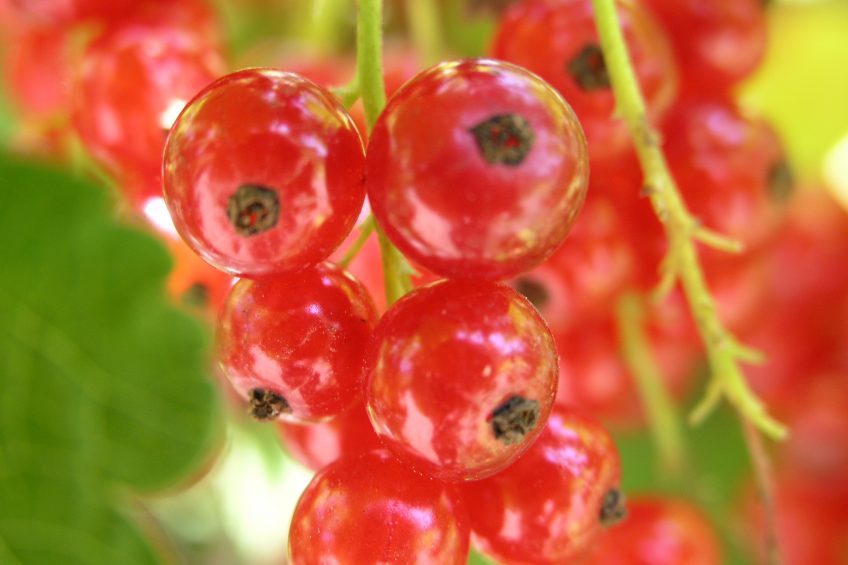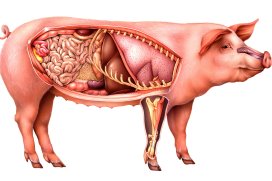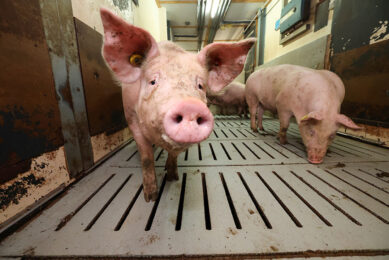Berries and ramsoms could kill E. coli in piglets

A cocktail of ramsons and acidic berries has been found to be have strong and synergistic antimicrobial activity. Danish researchers think the combination could be used as feed additive in both organic and conventional pig production.
The researchers are all connected to Aarhus University, Denmark. They made the discovery within the context of a research project looking at antibacterial plants against diarrhoea in pig herds (MAFFRA). In a news release, the team concluded, saying: “These cocktails are […] highly interesting and promising for further tests with respect to their ability to suppress E. coli O149:F4 in vivo and potentially being used for preventing and/or treating post-weaning diarrhoea in piglets as an alternative to conventional antibiotics.”
Ramsoms, redcurrants and lingonberries
The ramsons (Allium ursinum) contain sulphur compounds. The berries, like redcurrants (Ribes rubrum) and lingonberries (Vaccinium vitis-idaea) contain organic acids that display strong antimicrobial activity against bacteria like pathogenic strains of E. coli, known to induce post-weaning diarrhoea in piglets.

Read everything about pig health in the Pig Progress health tool
In the news release, the researchers stated that the mechanism behind the antimicrobial effect can be either a specific toxicity exerted by bioactive plant components, a pH-related effect (as a rule of thumb, E. coli only grow at pH above 4, and can be killed by pH below 4) or a combination of these.
Plants like these never considered before
According to the researchers, plants or components from plants like these have never before been considered as alternatives to conventional antibiotics. Some plant components are known to compromise palatability or nutritional value, especially if they need to be added in relatively high amounts. Hence there is always the need for a search for better cocktails.
The MAFFRA project screened a number of plants and berries, including the above mentioned, for their ability to inhibit in vitro growth and/or survival of E. coli strain O149:F4 in pig digesta. This strain is known for causing weaning diarrhoea. In particular, cocktails of the plants were tested to investigate if synergistic effects could be observed or, at least, if a mixture of plants, each added in lower concentrations could replace one plant added in a higher concentration.
Synergistic effect by mixing ramsons
The scientists collected digesta from stomach and small intestine from slaughtered animals that had been fed a standard pig diet. They inoculated small plastic bags containing digesta samples (5g) with a pure culture of E. coli O149:F4 (107-108 bacteria cells per g digesta) and amended these with freeze-dried, grinded plant powder in concentrations of 0.5% to 5%.
The bags were then sealed and incubated in a water bath (37°C) for 4 hours, after which the number of E. coli in the digesta was determined by selective culturing.
Results in the piglet’s small intestine
In the small intestine assays (initial pH ~6.5), ramsons (1% and 5% inclusion rate) showed a strong bactericidal effect towards the E. coli F4:O149 strain, and the effect was not due to a decrease in digesta pH (final pH ~6.5).
Bacteriostatic effects were also observed for the acidic materials (e.g. lingonberries and redcurrants), probably due to their pH-reducing effect (final pH ~4.5), but the effects were only observed with an inclusion rate of 5%.
For mixtures of ramsons and berries (0.5+0.5%), the observed effect was probably caused by ramsons alone. A mixture of 5 plants (0.2% each) showed no antibacterial effect.
Results from the piglets’ stomach
In the stomach assays (initial pH ~4.4), and with an inclusion rate of 5% plant material, redcurrants and lingonberries showed the strongest antimicrobial effect towards the E. coli F4:O149 strain, probably due to the pH decreasing effect (final pH ~3.75).
Ramsons (5%) showed a strong antimicrobial effect as well and, as observed in small intestine content, not due to a pH decreasing effect (final pH ~4.5). With an inclusion rate of 1%, ramsons still showed bactericidal effects, whereas no effects were observed with 1% of redcurrants or lingonberries (final pH ~4.2).
Interestingly, however, mixtures (1% of each) of ramsons and redcurrants or, in particular, lingonberries showed a bactericidal effect stronger than observed for 1% of ramsons alone.

The researchers added that this could be due to an interaction between the plant components or that the bactericidal effect of ramsons is pH-dependent (stronger with lower pH). In either case, the scientists added, the observation indicated that they had actually obtained a synergistic effect by mixing a cocktail of ramsons and either redcurrants or lingonberries.
The research was conducted by Ole Højberg, Nuria Canibe, Kai Grevsen, Martin Jensen, connected to the Department of Animal Science and the Department of Food Science, Aarhus University, Denmark.
Join 18,000+ subscribers
Subscribe to our newsletter to stay updated about all the need-to-know content in the pigsector, three times a week. Beheer
Beheer









 WP Admin
WP Admin  Bewerk bericht
Bewerk bericht